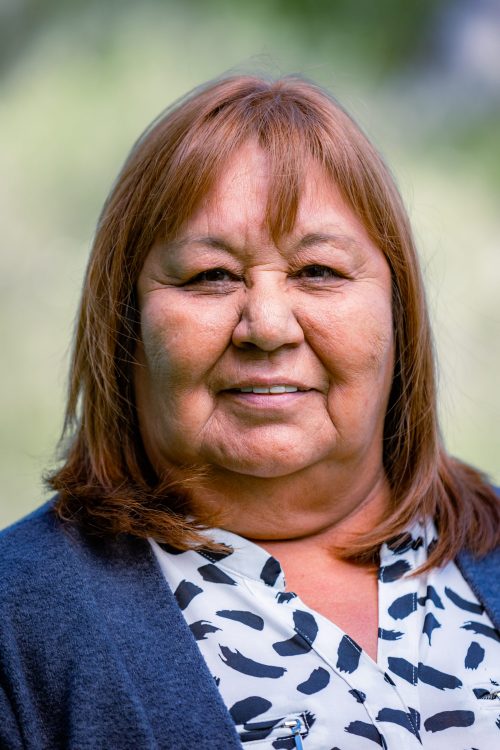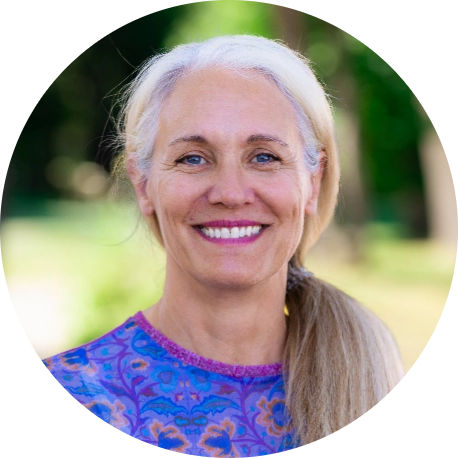I see you.
If you are sitting in the waiting room at Georgian Bay General Hospital’s Emergency department (ED) you may think that no one is monitoring you. You may be wondering why it’s taking so long. And you may think you’ve been forgotten. But you haven’t.
My name is Lisa and every time I come out to call another patient, I’m constantly scanning the room to assess every patient. Checking to see if anyone looks pale, if anyone’s breathing has worsened, or if their condition has changed. I’m constantly assessing everyone in the room because I’m a nurse and that’s what we’re trained to do. And I’m doing everything I can to get to you as soon as possible.
On any given day, our Emerg department cares for 115 to 120 patients, and as many as 180 in the summer. No two days are the same and you never know what you’re going to get. From lacerations and stitches to chest pains, seizures, trauma, respiratory issues, migraines and mental health crises, every shift is different.
Last night for example, I was assigned to the red zone. In the red zone, we typically care for less patients on a 12-hour shift, because their condition is more serious and requires more acute care. Last night, about half of my patients were brought in for mental health issues and the other half were experiencing chest pains.
One of my patients was found sleeping on a park bench and was brought in for a schizophrenic episode. Another person walked into Emergency concerned they may hurt themselves. Another patient was brought in by police and required sedation. All of these patients needed to be assessed, have blood work done, the crisis worker was called in and they had to be monitored in the ED until a transfer could be made to one of the mental health hospitals in our area. Sadly, this sometimes takes days or weeks, which is why we so urgently need more mental health services at GBGH.
And in addition to these patients, we also had four patients come in with varying degrees of chest pains. In fact, each nurse sees about 3 – 4 patients with chest pains on every shift, and every single one of them has to have an ECG within 10 minutes of arrival, so that we can determine if they’re having a heart attack or something less serious.
And that’s just the patients that I was taking care of last night! As you can imagine, it takes a whole team of dedicated doctors and nurses to meet our patients’ urgent needs. Yet, despite the ongoing challenges over the last two years and the daily stressors of working on the front lines, every day we pull together to give our patients the best care possible – and caring donors are very much a part of our team!
As I mentioned earlier, most days we care for more than 100 patients in the ED. Well, every single one of these patients has their vitals checked on a vital signs monitor, at least once, if not multiple times per visit. And remember all of those heart patients I told you about? They’re also going to be hooked up to heart monitors, portable telemetry packs, and IVs.
Plus, every day, we get multiple patients with abdominal pain, which could end up being anything from appendicitis to gall bladder, kidney stones, cancer or indigestion. Most of these patients will need a CT scan. We also care for trauma patients, and patients coming in with seizures and brain bleeds, all of which require detailed diagnostic imaging (CT Scanner or MRI) and blood testing in our Laboratory.
And don’t forget about x-rays. Every day dozens of patients need x-rays. From the 85-year-old grandma who broke her hip, to the trauma patient who comes in with a bone sticking out of their leg, or the 10-year-old boy who can’t breathe – we take hundreds of x-rays every day to provide us with vital diagnostic information.
And donors like you are providing these and dozens of other pieces of vital equipment that we rely on every day!
As you know, the past two years have been extremely difficult in health care. COVID-19 has challenged our hospital – and every hospital – in so many ways. Like almost all hospitals in Ontario, we’ve had outbreaks. We’ve had staff members get sick. And we’ve faced wave after wave of sick COVID patients. But through it all, we’ve felt the unwavering support of our community. We’ve witnessed many selfless gifts from so many individuals and local businesses. And we’ve found strength from your support.
So once again, I want you to know that I see you and I’m grateful for all you do. Today, I’m asking you to make a special gift today to continue putting life-saving tools and equipment directly into the hands of frontline staff like me.
With heartfelt thanks,
Lisa Davies
ED Nurse
Georgian Bay General Hospital
P.S. On any given day, we care for more than 100 people in our ED. To learn about the incredible impact of your giving, please read the stories below.
P.P.S. To see our ED care team in action, click here. ‘We See You’ is a documentary-style video that takes viewers behind the scenes in the Emergency Department at Georgian Bay General Hospital (GBGH).
I knew it was cancer…
During my last shift a woman in her sixties came in, complaining of a pain in her stomach. She said she hadn’t been feeling well and had lost 20lbs in the last couple of months. As soon as she said that, I knew it was cancer. We did a CT scan and it was confirmed. She was admitted to the hospital and referred for further care. Unfortunately, lately we’ve been seeing more and more cancer patients. With the pandemic a lot of people didn’t see their family physicians, or they were afraid to seek care and now we’re diagnosing more people in the ER with cancer. |
Further diagnostic imaging needed…
Sometimes we’ll have a patient come in with a non-critical head injury or a suspected brain bleed and when we send them for the CT scan, the report will come back saying we need further imaging from an MRI. Waitlists for an outpatient MRI are many months long. By bringing an MRI to GBGH we could vastly reduce wait times in our region and be a direct benefit to patients both in hospital and within our community. Currently, GBGH is the largest hospital in the province without an MRI or a commitment for one. |
20 car pile-up on the 400…
Last winter there was a 20-car pile-up on the 400 and we were told 10 – 12 ambulances were on their way to our Emerg with multiple car accident victims. We called every physician and nurse we could to come in, cleared all the non-urgent patients out of the ED and let radiology know that we’d be needing multiple CT scans. We didn’t know what was coming, but we prepared as best we could. When they arrived, the injuries ranged from a broken ankle to three critical patients who had to be airlifted to trauma hospitals in Toronto. It was unbelievably stressful, but I’m incredibly proud of how our team pulled together that day to save lives. |
I didn’t think we’d get him back…
I will never forget the time a teenage boy came in with severe abdominal pain and an extremely extended stomach. When we did the CT scan, my heart broke. He was so backed up that the stool had calcified inside of him and was pressing on his lungs and heart. He needed life-saving surgery, but as we began to prepare to transfer him to Sick Kids, he collapsed. Our team had to intubate him and do emergency surgery to relieve the pressure on his heart and lungs to stabilize him. When he collapsed I didn’t think we’d get him back, but I heard later that he survived and was okay. I’m so grateful that all of our efforts worked that day. |
 Ron & Gord are passionate philanthropists, with a love for travel, community and giving back. In 2016, they learned about the GBGH Foundation’s Cornerstone Partners program from their neighbours and joined immediately. They felt that it was important to support the Foundation annually, while also planning for the future. Ron & Gord have been generous donors to the GBGH Foundation over the past six years, having a significant impact on the most critical equipment and technology priorities at Georgian Bay General Hospital.
Ron & Gord are passionate philanthropists, with a love for travel, community and giving back. In 2016, they learned about the GBGH Foundation’s Cornerstone Partners program from their neighbours and joined immediately. They felt that it was important to support the Foundation annually, while also planning for the future. Ron & Gord have been generous donors to the GBGH Foundation over the past six years, having a significant impact on the most critical equipment and technology priorities at Georgian Bay General Hospital.














